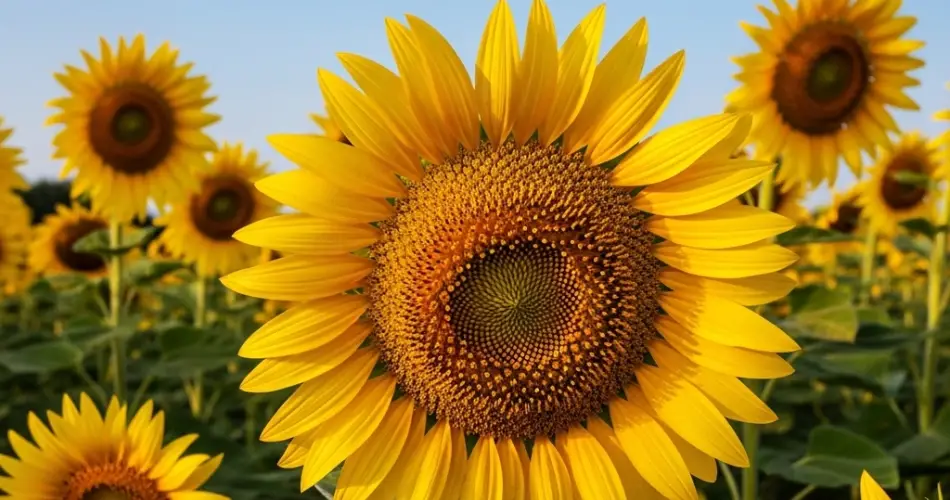Sunflowers are more than just cheerful, towering blooms that add beauty to your garden—they’re also valuable companions for a variety of plants. Their height, structure, and ability to attract pollinators make them excellent partners in the garden. With thoughtful companion planting, sunflowers can improve soil health, enhance pest control, and even boost the productivity of nearby crops. Here’s how to make the most of sunflowers in your garden and which plants grow best alongside them.
Why Use Sunflowers as Companion Plants?
Sunflowers serve several functions in a companion planting setup:
-
Provide Shade and Support: Tall sunflower stalks offer a natural trellis for climbing plants like beans or cucumbers and can offer shade to heat-sensitive crops.
-
Attract Pollinators and Beneficial Insects: The large blooms attract bees, butterflies, and ladybugs, which helps with pollination and natural pest control.
-
Improve Soil Structure: Their deep taproots help break up compacted soil, improving drainage and aeration for neighboring plants.
-
Pest Diversion: Sunflowers can act as trap crops, drawing harmful pests like aphids and stink bugs away from more delicate vegetables.
Best Companion Plants for Sunflowers
1. Cucumbers
Cucumbers and sunflowers grow well together, especially when the cucumbers are allowed to climb the sunflower stalks. This pairing saves space and helps keep cucumber fruits off the ground, reducing rot and pest problems.
Tip: Make sure to plant the cucumbers once the sunflower stalks are strong enough to support them.
2. Beans
Pole beans are excellent sunflower companions. The beans climb the sturdy sunflower stems while enriching the soil with nitrogen—an essential nutrient that sunflowers use heavily.
Tip: Avoid planting bush beans too close, as they may not get enough light due to the shade of the sunflowers.
3. Corn
Sunflowers and corn are often grown together in large gardens or fields. Their similar height means they won’t compete too much for light, and both attract beneficial insects that help control pests.
Tip: Allow adequate spacing to prevent competition for root space and nutrients.
4. Squash and Zucchini
Squash plants benefit from the pollinators that sunflowers attract. Their large, ground-covering leaves also help suppress weeds around the base of sunflowers.
Tip: Ensure good airflow between plants to prevent mildew and fungal issues.
5. Tomatoes
Tomatoes do well when planted near sunflowers, especially because sunflowers attract pollinators and predatory insects that control aphids and other pests common to tomatoes.
Tip: Provide extra support for tomatoes, as they shouldn’t rely entirely on sunflower stalks for stability.
6. Lettuce and Spinach
These leafy greens can take advantage of the dappled shade created by sunflowers, especially in hotter climates. This shade can prevent bolting and extend the harvest period.
Tip: Plant greens on the east side of sunflowers so they get morning sun but afternoon protection.
7. Herbs Like Basil, Thyme, and Mint
Some herbs, particularly aromatic ones like basil and thyme, can help deter pests while benefiting from the increased pollinator activity brought in by sunflowers. Mint can also be useful but should be planted in containers to prevent spreading.
Tip: Choose herbs that stay low to the ground and don’t compete for light or root space.
Plants to Avoid Planting with Sunflowers
While many plants thrive next to sunflowers, a few do not:
-
Potatoes: Sunflowers may compete with potatoes for nutrients and attract wireworms that can damage potato tubers.
-
Fennel: This herb is generally unfriendly to most plants, as it releases substances that inhibit growth.
-
Pole beans (when overcrowded): While beans can be good companions, overcrowding or poor support can result in tangled vines and reduced airflow.
Companion Planting Layout Tips
-
Spacing: Give sunflowers enough room so they don’t overshadow or crowd neighboring plants.
-
Staggered Planting: Plant sunflowers a couple of weeks before climbers like beans or cucumbers, allowing them to grow strong stems.
-
Rotation Planning: After the growing season, chop and compost sunflower stalks to return organic matter to the soil. Be aware that sunflower roots release substances that can inhibit the growth of certain plants if planted too soon after.
Final Thoughts
Companion planting with sunflowers is a great way to boost your garden’s productivity and ecological balance. Their towering height, visual appeal, and ecological benefits make them more than just ornamental additions. Whether you want to attract pollinators, support climbing plants, or create natural shade, sunflowers can play a strategic role in your garden design.
By choosing the right plant partners and giving each one the space and care it needs, you’ll create a vibrant and mutually beneficial garden ecosystem—centered around the golden brilliance of sunflowers.



